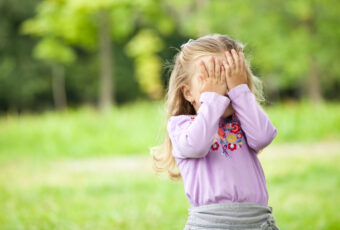As parents, it can be surprising and frustrating when kids lose interest in new toys so quickly. Of course, the transition from begging and convincing that they absolutely must have this toy to leaving it completely behind and untouched is difficult to watch. So what’s the reason that this happens?
According to licensed clinical psychologists Dr. Camille Ace, this phenomenon can be attributed to underdeveloped emotional regulation, poor impulse control, peer pressure, and natural attention span limits.

It Seems Like Kids Lose Interest In Toys Very Quickly
Dr. Ace explained: “A child’s desire for the toy may be influenced by underdeveloped emotional regulation, poor impulse control, or peer pressure. It could also be that the new toy, which initially seemed like a bright, shiny miracle, is, in fact, a toy that limits or does not ignite the child’s imagination. A toy that limits a child’s creativity can cause a loss of interest no matter how excited the child was initially to get their little fingers on the newest, hottest toy.”
Clinical psychologist Dr. Rebecca Harvey said that this could also have to do with their attention span, which correlates to their age.
Additionally, clever marketing and social influence can factor into a child’s desire for a shiny new toy. Dr. Ace said: “Children are easily and heavily influenced by the ads they see on TV or on YouTube. There’s a reason commercials work; they hype toys up and make them look like endless fun. It’s easy to understand why a child ‘NEEDS’ the new toy, especially if all their friends have one. We, as parents, hate the idea of our child feeling left out, so a quick fix is to simply buy them the new, popular novelty. But lo and behold, the new plaything isn’t all it’s cracked up to be.”

What Is The Reason Why?
Dr. Ace suggests that reducing the number of toys can help combat this loss of interest. She said: “As contradictory as it may sound, a child’s interest thrives when they have fewer toys in front of them. Too many toys can cause a child to be overwhelmed because it’s just too much for their minds to process. As parents, we often misunderstand their loss of interest and may purchase more toys we hope will retain their interest, but the cycle continues.”
Keeping toys on rotation will help avoid this burnout that causes the quick loss of interest. You can put some toys away so that they become “out of sight, out of mind,” and then re-introducing them will keep them exciting once kids see them again. You can do this again once they start losing interest once again, and keep the cycle going.

The Experts Weigh In
Dr. Ace also said: “The New Toy Decision can be based on so many factors: the child’s emotional state, the parents’ ability to navigate the child’s emotional state, the outcome and balance of purchasing versus not purchasing the new toy (cost of toy, tantrums, guilt), and our memory (accurate or inaccurate) of the child’s interest in prior ‘new toys.’ As parents, we often see a new toy purchase as an opportunity to ‘connect’ with the child and ignore the obvious signs that the new toy may not be all it’s cracked up to be.”
According to Dr. Harvey: “The purpose of toys is for brain, motor skill, and social/emotional development. Having toys that hit on the key areas of development and stimulation (educational, pretend, action, and rolling push toys) is important.”
She also reminds us: “It’s key to encourage creative and open play by having non-electronic/battery-operated toys and allowing children to ‘create’ toys and activities with household items like homemade goo or building a spaceship out of shipping boxes.”

Limit The Amount Of Toys They Have








